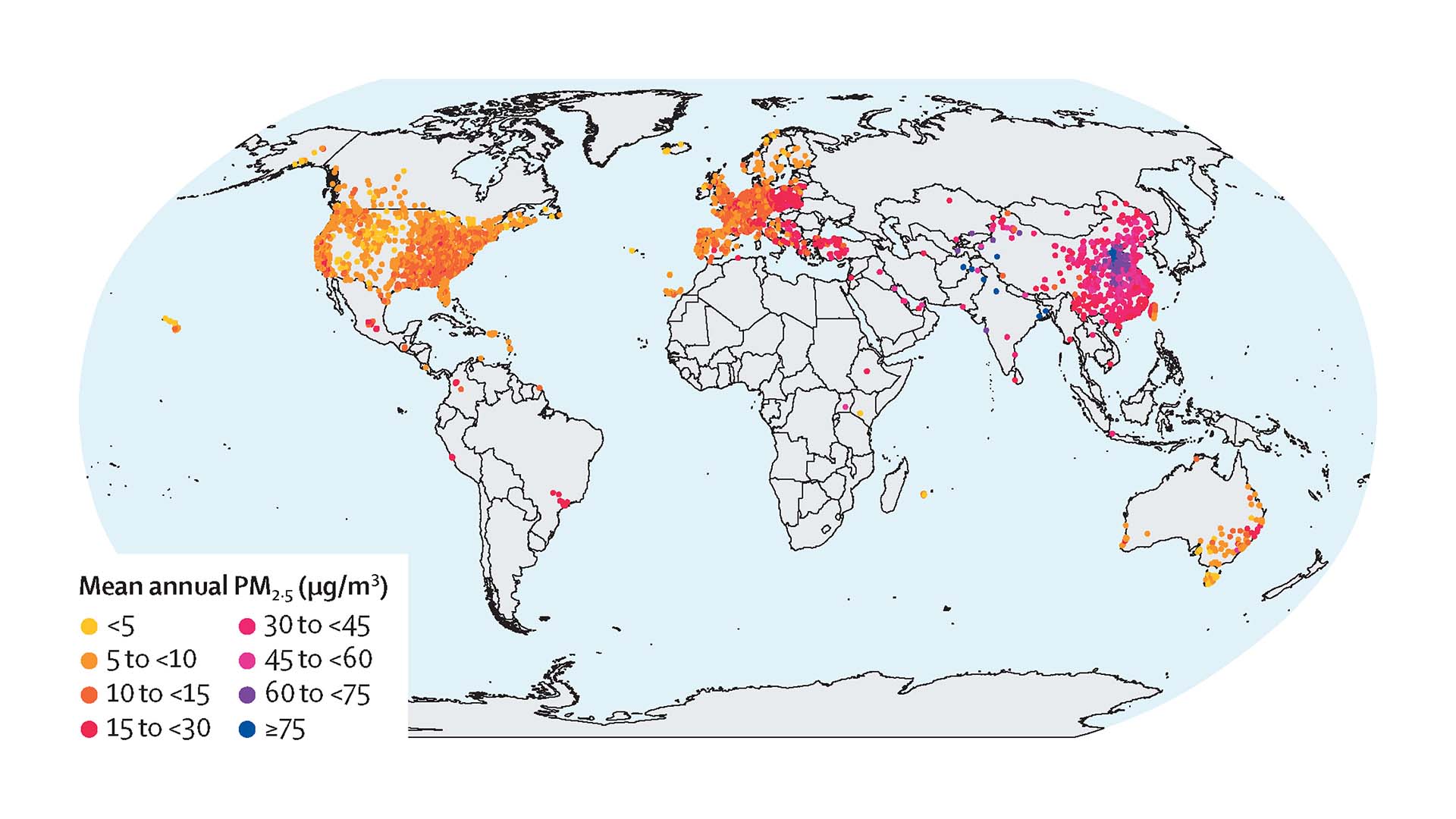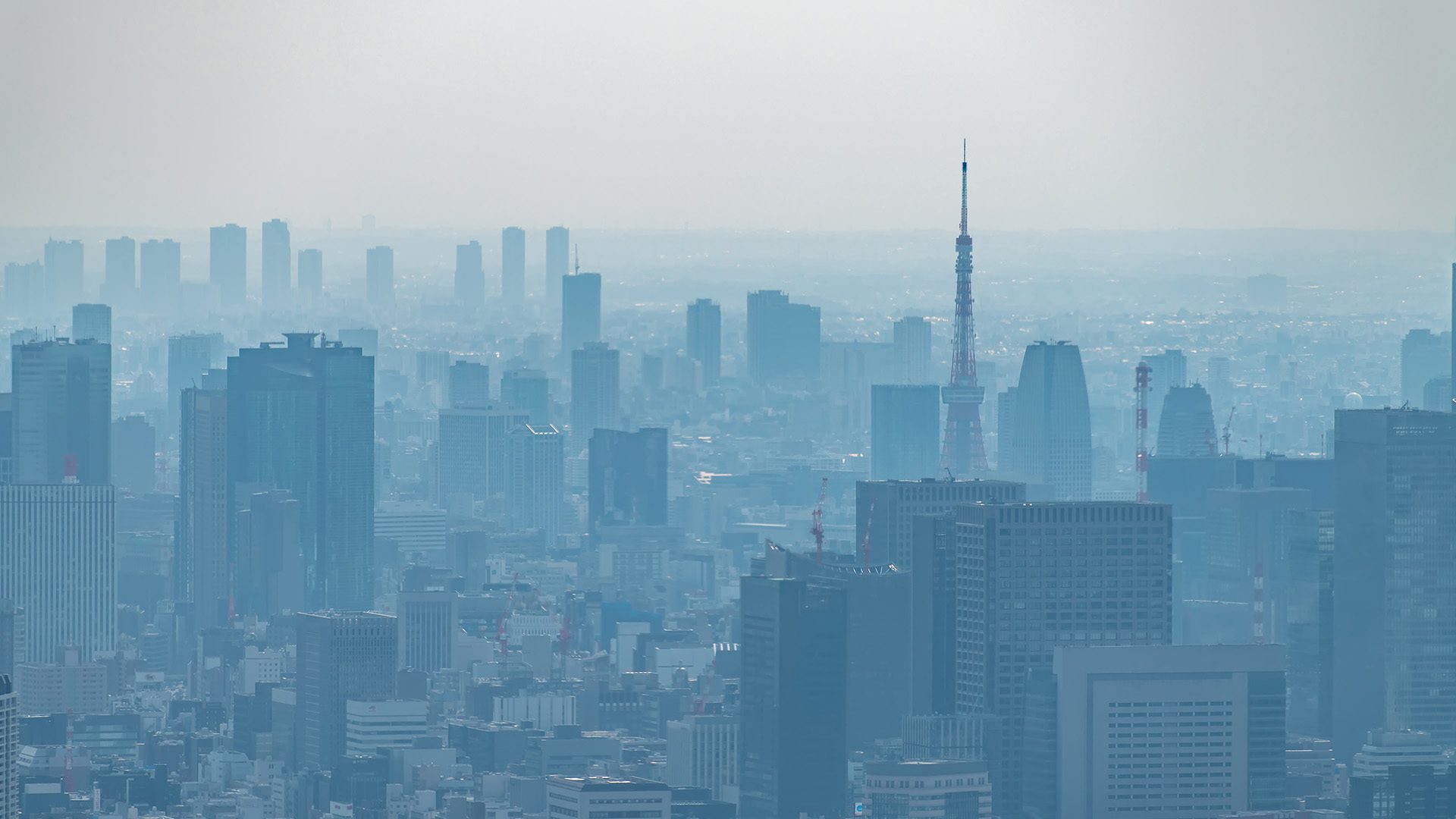In a first-of-its-kind study, researchers found that just .0001% of the global population is exposed to the World Health Organization’s recommended safe levels of daily ambient fine particulate matter (PM2.5).
Groundbreaking Study
The study, published in Lancet Planetary Health on March 6, acknowledged how the lack of pollution monitoring stations has made collecting accurate data on global PM2.5 exposure challenging in the past. However, thanks to several technological developments and improvements, this new analysis was the world’s first to demonstrate how the global distribution of PM2.5 has changed over the past few decades.

The research team utilized traditional air quality monitoring observations, satellite-based meteorological and air pollution detectors, and statistical and machine learning methods. This allowed the team to develop global grid cells that focused on areas above 15 µg/m³ (micrograms per cubic meter air), which is considered the recommended 24-hour limit by the 2021 WHO guidelines.
The study discovered that the annual average PM2.5 level worldwide from 2000 to 2019 was 32.8 µg/m³, with the highest concentrations distributed in Eastern Asia (50.0 µg/m³), Southern Asia (37.2 µg/m³), and northern Africa (30.1 µg/m³). Australia and New Zealand had the lowest annual concentrations with 8.5 μg/m³. It was also found that daily levels in Europe and North America have decreased, but levels have risen for Southern Asia, Australia, New Zealand, Central America, and the Caribbean.
Notably, 0.001 percent of the world’s population and 0.18 percent of the global land area was exposed to an annual exposure lower than the recommended annual limit by the WHO of 5 µg/m³. As the leader of the study, Professor Yuming Guo, said about the research and the future, “It provides a deep understanding of the current state of outdoor air pollution and its impacts on human health. With this information, policymakers, public health officials, and researchers can better assess the short-term and long-term health effects of air pollution and develop air pollution mitigation strategies.”
Problems of Particulate Matter
PM2.5 are particles in the air that measure less than 2.5 micrometers in diameter that reduce visibility and cause the air to appear hazy. It comes from outdoor sources such as vehicle exhausts, power plants, and anything that involves burning fuels. Some indoor activities can also produce PM2.5, such as cooking, operating fireplaces, and tobacco smoke.

The particles can travel deeply into the respiratory system and can cause short-term health effects like eye, nose, throat, and lung irritation, coughing, sneezing, and shortness of breath. PM2.5 can worsen medical conditions like asthma and heart disease. Long-term exposure to it has also been linked with higher rates of chronic bronchitis and increased mortality from lung cancer and heart disease.
Furthermore, one study found that ambient air pollution, as annual PM2.5, accounted for 3.1 million deaths in 2010. Another study discovered that exposure to PM2.5 decreased the life expectancy of the population in European Union countries by about 8.6 months on average.







